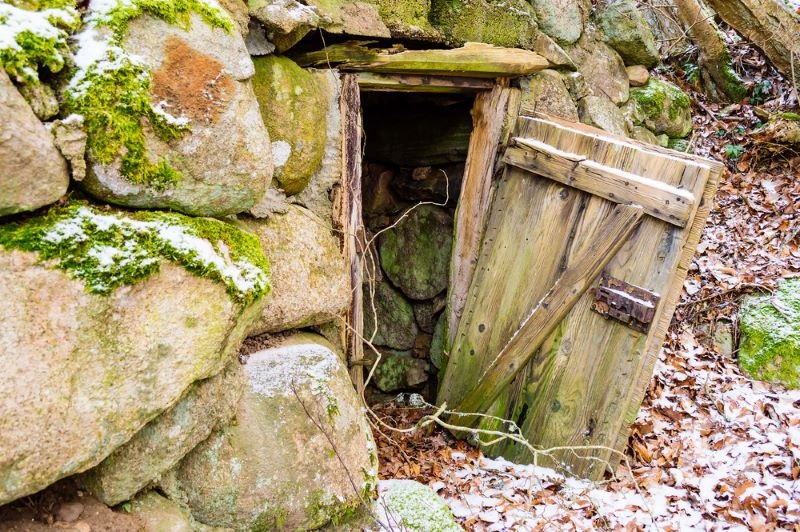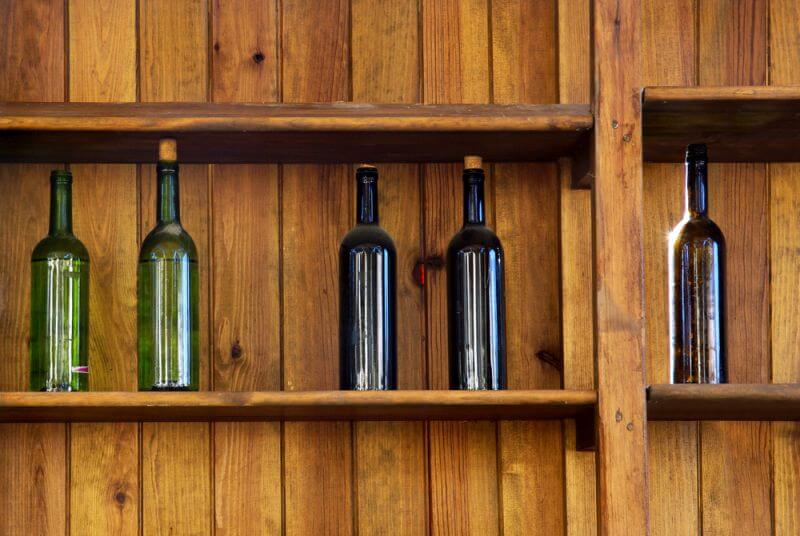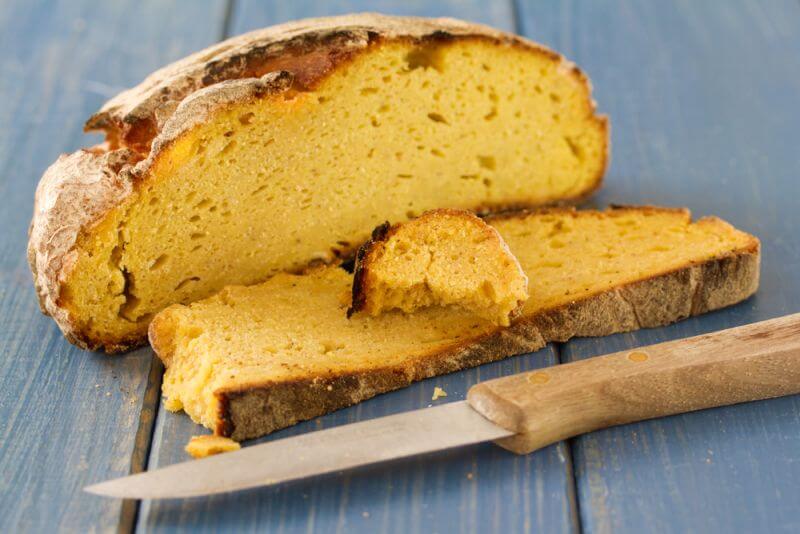Stockpiling food is the most basic sign of a prepper. We spend a small fortune building our stockpile just to make sure that we’ll have food and water when the power goes out, or the supply chain falls apart. Many of us were thankful during the pandemic because we weren’t really affected when the grocery stores ran out of food. Rather than panic, we went to the stores to see all the unprepared people panic.
Nevertheless, our food preps tend to be very specific in that we stick with non-perishable foods. Even the food that we grow gets canned or dried, making it non-perishable. At the same time, we pride ourselves on knowing how to live without electric power, just like our ancestors did back in the 1800s. With that being the case, I occasionally have to ask myself why we don’t take care of the technology they had available to them back then.
There are many examples of this, but I’m specifically talking about root cellars right now. Root cellars were in common use from the 18th century up until they were replaced by modern refrigeration in the 1900s. They were specifically used for storing root vegetables, like potatoes, carrots, and onions, although they could also be used for storing canned goods, smoked meats, and even alcoholic beverages. For some families, the root cellar also served as an emergency storm shelter, giving them someplace to ride out tornadoes.
Vegetables that are to be stored in a root cellar require literally no preparation other than knocking the dirt off of them (not washing it off) and cutting the greens off close to the root. That means that using a root cellar can save a huge amount of time that would otherwise be spent canning foods that don’t actually need to be canned.
Yet it’s rare to find a prepper family which has one.
I’ll give us the benefit of the doubt here, allowing that it takes a lot of work to build a root cellar. Yet there are those amongst us who talk about building bunkers as if it is no big thing, so every prepper should have one. Considering that the two are rather similar, it’s hard for me to understand the difference in people’s thoughts about the two.
Root cellars function by a combination of two things. First, the lower temperature in the root cellar accomplishes two complementary roles; it slows the release of ethylene gas from some types of crops. That gas, when released, causes other produce to overripen, creating brown spots. At the same time, the lower temperature slows the metabolism of bacteria and other microorganisms that eat food, spoiling it. In addition to that, the high humidity helps keep the water inside of produce from leeching out and evaporating, helping prevent it from withering.
A Couple of Important Factors
Ideally, for the root cellar to work at its maximum potential, it needs to hold an internal temperature of 32° to 40°F and a humidity of 85 to 90 percent. Even so, there are a lot of root cellars around, which only hold their internal temperature down at 55°F; that can even rise higher in the summer months. While that’s not as effective, it will still work to help prolong the life of the food stored in the cellar.
Any root cellar needs to have a thermometer and hydrometer installed so that you can keep track of the temperature and humidity inside the cellar. Some sort of ventilation is needed to help control both temperature and humidity. Drainage is also a concern, ensuring that water that collects in the cellar from rainfall can be removed, either through natural drainage or with a pump.
To reach stable ground temperature requires digging down ten feet below the surface. That’s true whether the root cellar is dug straight down into the ground or whether it is dug into the side of a hill. At the same time, digging that far underground gets the root cellar below the frost line, ensuring that the contents of the cellar won’t freeze.
The other big concern is the water table. There are places, especially around the Gulf Coast, where the water table is so high that it is impossible to dig a root cellar and not have it fill with water. While a high humidity level is important in the cellar, having that water in there will destroy the food. That means that it is impossible to build a root cellar in those areas unless it is totally waterproof.
There are many different ways of building a root cellar, depending on the time, materials, space, and funds available. Let’s look at a few of the more common.
Dig a Hole in the Ground
The traditional root cellar is an underground room, sometimes created from a preexisting cave and sometimes dug by hand. It is considerably easier to dig this into a side of a hill, which will also provide natural drainage so that water doesn’t build up in the cellar. But if you don’t have a hillside available to you, dig right down into the ground and bury it.
Before doing anything, though, check with your local building permitting office to ensure that there isn’t any restriction against what you are going to do. These restrictions may include not putting your root cellar within 10 feet of your property line and having to get a building permit before construction.
There are commercially-manufactured, prefabricated root cellars that can be purchased, ready to be dropped into a hole in the ground. These are usually made of fiberglass and aren’t all that big. But they are waterproof, which is a nice thing to have. Should you decide to go that route, expect to pay several thousand dollars for the prefab root cellar.
For the rest of us, building a root cellar means building an underground room the old-fashioned way. Avoid building it near a tree, as the roots will eventually come through the walls. Using a shipping container isn’t a good idea, as the container isn’t built to be strong enough to support the soil backfilled over it. If you use a shipping container, you’ll need to build a strong roof over it.
Two of the best ways of constructing a root cellar are by using either cement blocks or earthbags. Either allow the walls to be tapered inwardly, creating a domed or arched roof. That solves the biggest structural problems that might be encountered. Both will last for years and don’t require a floor to be installed. However, putting in a footer can help with cement block, as it provides a level surface for the block to be stacked upon.
Any time the root cellar is dug into the ground rather than into the side of the hill, drainage is likely to be a problem. In those cases, you’ll want to dig a French drain or sump pit (with pump) under the floor and cover the floor with a layer of gravel instead of leaving it as dirt. That will allow the water to be drained out. By no means do you want the water to reach the level of the food being stored inside.
Partition off a Corner of the Basement
A much easier way of building a root cellar is to use a corner of your home’s basement, assuming it has one. By the way, if homes in your area don’t have basements, that’s a pretty good sign that you can’t put them in a root cellar. If the basement is going to be used, the best corner is the northeast one, as that will naturally be the coolest corner.
Build two walls on the west and south sides of the area you’re going to be using as a root cellar, insulating them well and sealing them to the floor, existing walls, and ceiling. If the ceiling is not already closed in, close it in as well, insulating the area above the sheetrock well. You’re trying to isolate this room from the rest of the basement as well as possible so that it can remain cooler. Watch out for pipes running through the area, as they can heat up the root cellar; you’ll need to insulate those well too.
A typical interior door is not sufficient, as it doesn’t insulate well. You’re much better off using an aluminum or steel foam-filled exterior door. Aa an alternative to save money, use a normal interior door, but attach a couple of layers of Styrofoam insulation on the inside.
The other thing that the root cellar needs i 1s ventilation. An air inlet needs to be installed (a 4” PVC pipe will work) that goes from just above ground level outside to floor level inside. You also need an air outlet vent as high as possible, just below the ceiling. This should have a one-way louvered cap on it, of the type that are used for the air outlet on clothes dryers. That way, it will only open when air pressure inside the root cellar forces it open, not when the ambient air pressure outside is higher.
These two air vents will keep the coolest possible air inside the root cellar, and they will do so by natural convection. When the sun goes down, and the air cools, the colder air will seek to drop as low as possible, causing it to go down the inlet pipe into the root cellar. The higher air pressure that causes will cause the warmer air near the ceiling to pass out of the room through the louvered vent. During the daylight hours, when the ambient air temperature is higher than that inside the root cellar, the warmer air will not travel down into the air inlet, and the outside air will be warmer than that inside the roto cellar, keeping the air inside the cellar from existing through the louvered vent.
Bury a Container
The simplest way of gaining the benefit of a root cellar is to bury a container in a hole in the ground. This can be a trash can, a plastic bin, or a no longer working refrigerator lying on its back. Regardless of the type of container, it needs to be buried below ground level or with the openable top right at ground level. Cover the container with something to act as insulation, such as a discarded mattress wrapped in a waterproof plastic cover.
Please note that this sort of root cellar won’t get as cold as the more complex versions, although it will stay cooler than the ambient daytime temperature. Therefore, it will keep your produce better and longer than leaving it out in the open, even though it won’t be as good as having a real root cellar.
To improve on the basic design, you can make the hole too big by several inches in each direction. Then fill the space outside the container with sand. If you water the sand daily, filling it with water, the sand will evaporate, cooling the contents of the roto cellar. However, for this to work, whatever is being used as insulation for the lid of the container must not cover the sand. Rather than a mattress, it would be better to use a couple of layers of Styrofoam insulation glued to the lid itself.
Using a Root Cellar
Produce shouldn’t be washed before putting it in the root cellar so that it doesn’t bring any additional water with it. While a humid environment is desirable, that water can lead to mold forming on the produce. Take care when handling the produce, so as to not bruise it.
Install wood shelves inside the root cellar, keeping them a few inches away from the walls. Wood doesn’t transmit heat as quickly as metal does, making it ideal. Store the produce on wood shelves, lining the vegetables up on the shelves so that they aren’t touching. The best shelves to store the produce on are those closest to the floor, where it is cooler, and the humidity is higher. Use the upper shelves, where it is warmer, for storing canned goods and other things.
There are a few vegetables, such as potatoes, pumpkins, and onions which need a few days to “cure” in warm temperatures before being placed in the root cellar. Some fruits (specifically apples and pears) “breathe” the aforementioned ethylene gas, causing spoilage in other produce. To reduce this, outgassing, wrap those fruits in newspaper before placing them in the root cellar.
All root cellars should be checked regularly, verifying that they are remaining cool and moist. Inspect the produce regularly as well, removing any that is showing signs of spoilage. Regardless of the type of spoilage, it will spread if left in place.








John | May 17, 2022
|
I live in Central Florida on the east coast.
Is it possible to have a root cellar in Florida?
Lisa | May 19, 2022
|
I truely want a root cellar, however, I may need to blast the hole, our calieche ground can be concrete.